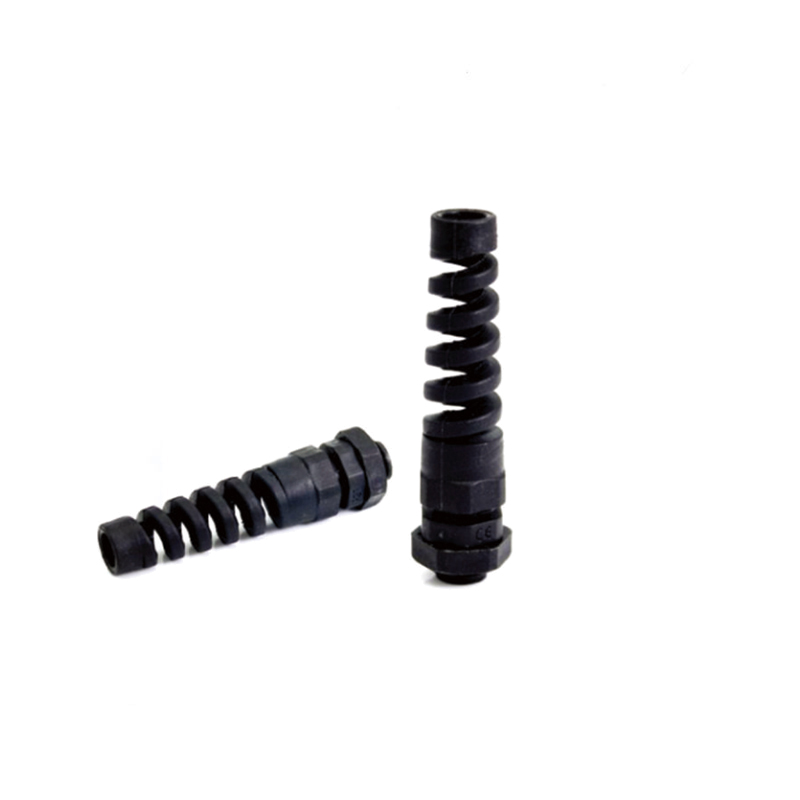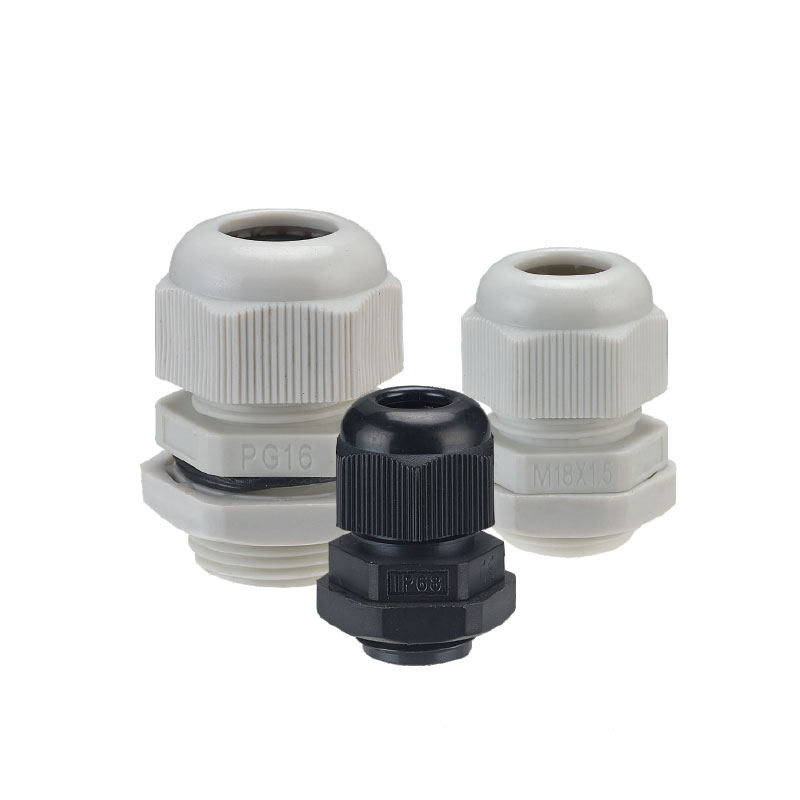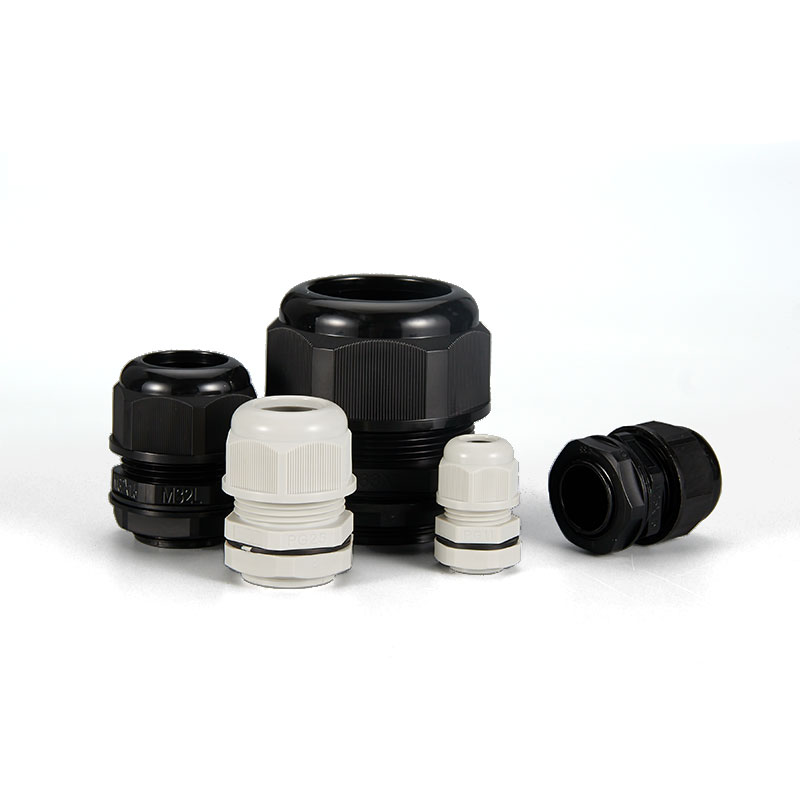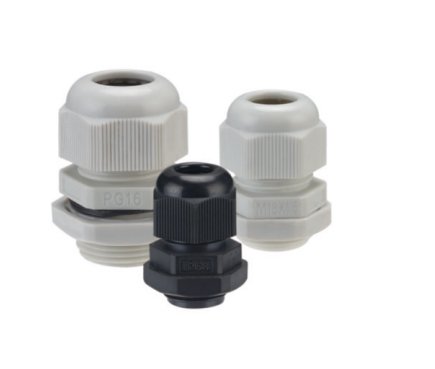Are you looking for a reliable, safe, and cost-effective cable gland? Nylon Cable Gland, widely used in industrial applications, has won the favor of many corporate users with its excellent performance and diverse specifications. Today, we will explore every aspect of nylon cable glands in depth, helping you quickly grasp the advantages, selection criteria, and application cases of this product. If you want to add a layer of reliability to your factory procurement or design plan, this guide is a must-read!
Basic Introduction to Nylon Cable Gland
What is a Nylon Cable Gland?
Simply put, a nylon cable gland is a sealing device used at cable entries to secure and protect the cable from tension, vibration, dust, and moisture infiltration. It tightly clamps the cable to ensure safe and reliable connections, preventing loosening or water leakage.
Main Functions and Advantages
Waterproof and Dustproof: Often rated up to IP68 or even IP69K, capable of withstanding prolonged immersion underwater.
Corrosion Resistance: Nylon material resists chemical corrosion, suitable for harsh environments.
Lightweight and Strong: Easy to install due to lightweight construction.
Excellent Insulation: Prevents electrical short circuits and ensures safety.
Applications
Industrial equipment
Communication and network systems
Automated production lines
Power distribution boxes and control cabinets

Material and Structural Details
| Component | Material | Main Features and Function |
|---|---|---|
| Body | Nylon (PA6 or PA6.6) | Wear and corrosion resistant, UL 94 V-2 flame retardant |
| Sealing Ring | NBR, EPDM, Neoprene | Provides effective waterproof sealing |
| Locknut | Nylon | Ensures firm fixation, easy to install and remove |
Material Characteristics: Nylon material resists UV aging, operates stably from -40°C to 100°C, and can withstand short-term temperatures up to 120°C.
How to Choose the Right Nylon Cable Gland
Choosing a suitable cable gland mainly depends on the following:
Cable Diameter Matching
Select the gland size based on your cable’s outer diameter. For example, M12 fits 3-6.5mm cables, M25 fits 13-18mm cables.Protection Level Requirements
Choose IP66 or IP68 according to whether the environment is wet or dusty to ensure adequate protection.Temperature and Chemical Resistance
For high-temperature or highly corrosive environments, choose flame-retardant and chemical-resistant models.Installation Environment
For outdoor use, choose UV-resistant and aging-resistant products; for environments with vibration, choose anti-vibration designs.
| Size Model | Typical Cable Diameter (mm) | Typical Protection Level | Notes |
|---|---|---|---|
| M12 | 3 – 6.5 | IP68 | Small devices and light use |
| M20 | 10 – 14 | IP68 | Industrial control systems |
| M25 | 13 – 18 | IP68 | Machinery with thicker cables |
| M32 | 18 – 25 | IP68 | Power cabinets and large equipment |
Protection Ratings and Certifications Explained
Protection rating is a key factor in measuring nylon cable gland performance. Common ratings include:
IP68: Dust-tight and waterproof, capable of long-term immersion.
UL 94 V-2: Fire retardant standard ensuring safety.
RoHS & REACH: Environmentally friendly certifications meeting international regulations.
CE & UKCA: Compliance with European and UK safety and quality standards.
| Protection Rating | Meaning | Represents |
|---|---|---|
| IP66 | Dustproof, strong water jets resistance | Suitable for rain and dusty environments |
| IP68 | Dustproof, long-term immersion resistance | Preferred for outdoor and damp industrial settings |
| UL 94 V-2 | Flame retardancy | Slows fire spread |

Installation Method and Tips
Installing a nylon cable gland sounds simple, but correct installation is vital to ensure sealing and fixing effectiveness.
Standard Installation Steps
Preparation: Confirm cable diameter and select matching gland size.
Disassemble Components: Separate locknut, sealing ring, and other parts.
Threading: Pass the gland body through the cable, then through the mounting hole.
Seal Ring Installation: Ensure tight contact with the cable.
Tighten Locknut: Tighten until firm with no slippage.
Installation Tips
Avoid cables that are too thin or too thick to prevent sealing failure.
Do not overtighten to avoid damage to the nylon material.
Regularly inspect the gland to maintain sealing performance.
Application Cases and Industry Solutions
Nylon cable glands have wide applications and serve as indispensable “guardians” in everything from industrial automation to distribution boxes.
Power Cabinet Manufacturers: Use IP68-rated nylon glands to ensure waterproof and dustproof outdoor power control boxes, extending service life.
Automation Equipment: Choose vibration-resistant and wear-resistant glands for machine tools and packaging machines.
Communication Systems: Keep network connections sealed to avoid environmental damage and ensure signal stability.
These uses help enterprises improve equipment safety and reduce maintenance costs.
Purchasing and Customization Service Guide
For enterprises requiring bulk purchases, selecting a professional supplier is crucial. Our factory offers:
Complete range of sizes to match various cable diameters.
OEM/ODM services supporting customized colors, logos, and special functions.
Certified products: CE, RoHS, UL, IP68, etc.
Pre-sales technical support to help you choose precisely.
If you are looking for a stable partner or want samples and quotes, feel free to contact us and enjoy professional custom services!
Nylon cable glands offer a safe, stable, and cost-effective cable protection solution. Whether you work in industrial manufacturing, telecommunications, or equipment maintenance, a suitable nylon cable gland adds a solid protective barrier to your system. We hope this guide helps you fully understand Nylon Cable Glands and make wise purchasing decisions. Want to know more product details or get a quote? Don’t hesitate—contact our professional team and start your journey to reliable equipment safety today!
FAQ
Will nylon glands age and become brittle?
High-quality nylon material is UV and aging resistant. Under normal use, its lifespan reaches several years but avoid prolonged sun exposure.
How is waterproof performance guaranteed?
Waterproofing relies on NBR or EPDM sealing rings combined with precise mechanical clamping to achieve IP68-level protection.
Can they be used in high-temperature environments?
Standard nylon glands operate at -40°C to 100°C, tolerate up to 120°C short-term. Special flame-retardant models withstand higher temperatures.
What to choose for outdoor use?
Recommended are UV-resistant and IP68-rated models to ensure long-term weather resistance.







